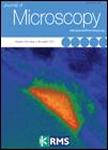版权所有:内蒙古大学图书馆 技术提供:维普资讯• 智图
内蒙古自治区呼和浩特市赛罕区大学西街235号 邮编: 010021

作者机构:Imperial Coll London Qatar Carbonates & Carbon Storage Res Ctr QCCSRC Dept Chem Engn London England Imperial Coll Dept Chem Engn London SW7 2AZ England
出 版 物:《JOURNAL OF MICROSCOPY》 (显微镜学杂志)
年 卷 期:2017年第265卷第2期
页 面:261-271页
核心收录:
学科分类:07[理学] 08[工学] 0804[工学-仪器科学与技术]
基 金:QCCSRC Qatar Petroleum Shell Qatar Science and Technology Park BG Group through Imperial College Centre for CCS
主 题:Carbonate rock confocal imaging three-dimensional
摘 要:In the last decade, imaging techniques capable of reconstructing three- dimensional (3-D) pore-scale model have played a pivotal role in the study of fluid flow through complex porous media. In this study, we present advances in the application of confocal laser scanning microscopy (CLSM) to image, reconstruct and characterize complex porous geological materials with hydrocarbon reservoir and CO2 storage potential. CLSM has a unique capability of producing 3-D thin optical sections of a material, with a wide field of view and submicron resolution in the lateralandaxial planes. However, CLSMis limited in the depth (z-dimension) that can be imaged in porous materials. In this study, we introduce a grind and slice technique to overcome this limitation. We discuss the practical and technical aspects of the confocal imaging technique with application to complex rock samples including Mt. Gambier and Ketton carbonates. We then describe the completeworkflow of image processing to filtering and segmenting the raw 3-D confocal volumetric data into pores and grains. Finally, we use the resulting 3-D pore-scale binarized confocal data obtained to quantitatively determine petrophysical pore-scale properties such as total porosity, macro-and microporosity and singlephase permeability using lattice Boltzmann (LB) simulations, validated by experiments.